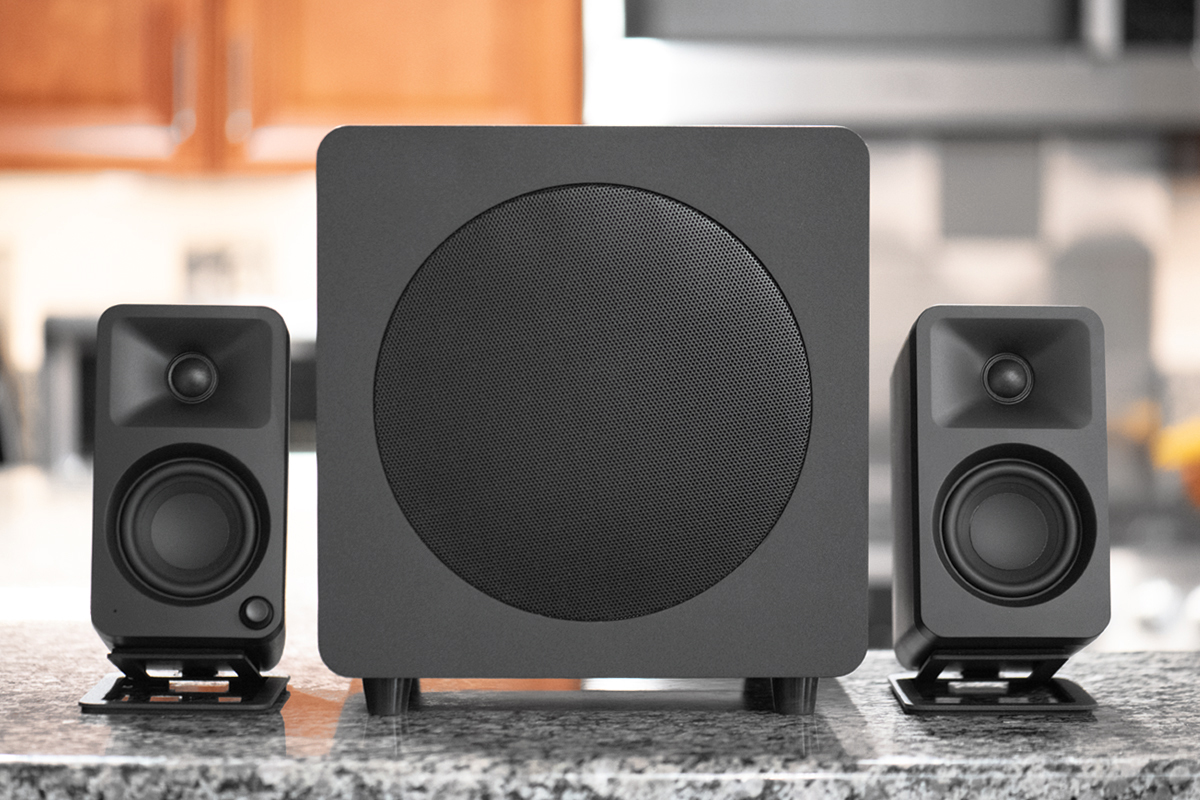Kanto Audio is a Canadian-based consumer electronics company, with headquarters near Vancouver, British Columbia. Its offerings include powered and passive desktop and bookshelf speakers, a powered subwoofer, and three types of speaker stands. For this review, Kanto sent me its latest offering, the ORA Reference desktop speaker system ($349.99, all prices in USD), along with its SUB8 powered subwoofer ($269.99) and two pairs of desktop speaker stands, the S2 and SE2 ($29.99 and $39.99).
Features
The compact ORA system is designed to fit in nearly any desktop landscape. Each enclosure measures 6.9″H × 3.9″W × 5.6″D and houses a 3″ paper-cone midrange-woofer and a 0.75″ silk-dome tweeter. Unlike Kanto’s other desktop speaker systems, the ORA is an active design, employing a DSP-enabled crossover to feed a dedicated class-D amplifier for each driver. The midrange-woofer amps are rated at 16W RMS, the tweeter amps at 9W RMS. Frequency response is specified at 70Hz–22kHz (deviation unspecified).
The amplifiers and other electronics are housed in the right-channel (primary) speaker, which sends left-channel speaker-level audio to the secondary speaker over a four-conductor cable. Channel allocation cannot be changed.
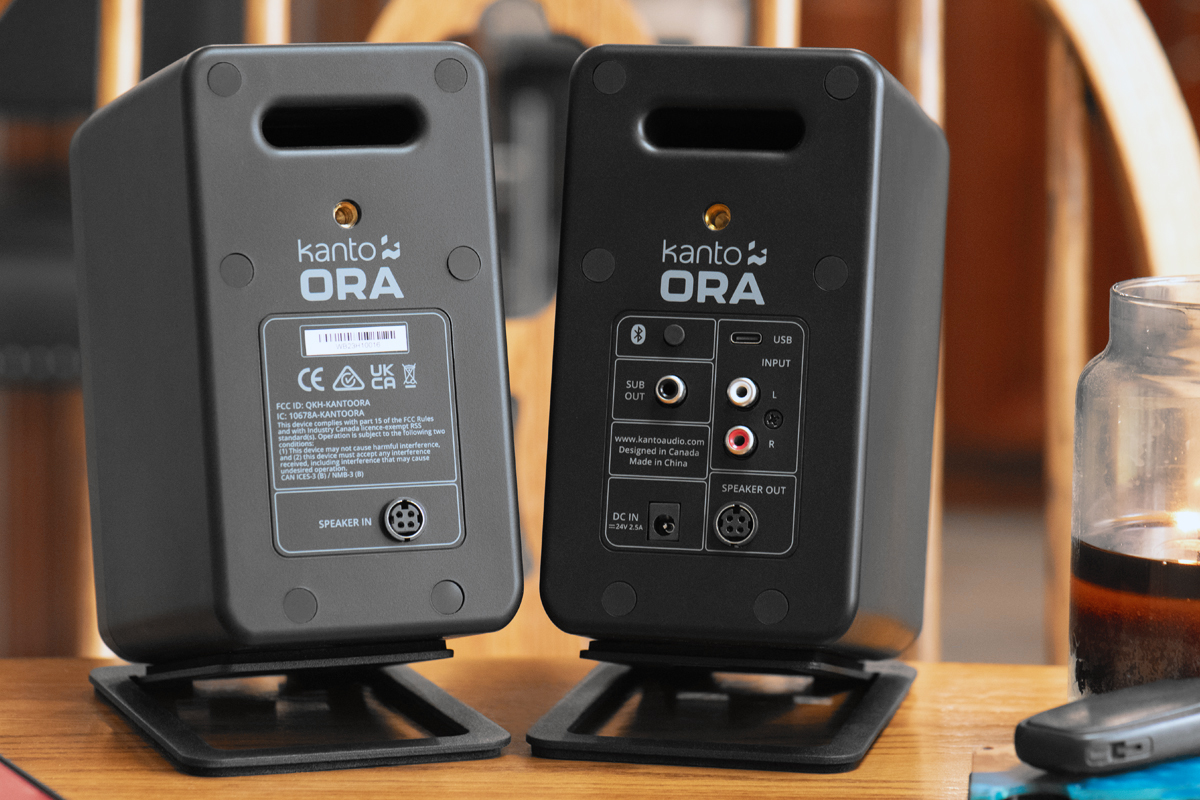
At the top of both speakers’ back panels is a bass-reflex port; below it is a threaded mounting hole for attaching a wall mount. At the bottom is a four-pin input connector for the supplied 6′ cable, which carries separate signals for the midrange-woofer and tweeter.
The electronics panel on the primary speaker carries the subwoofer and audio-source connections. On the top left is a Bluetooth pairing button, and below it is a subwoofer output jack. The subwoofer output is low-pass-filtered at 100Hz. When you connect a subwoofer, the ORA automatically engages a 100Hz high-pass filter for the main speakers. This frees the small ORA midrange-woofers from having to reproduce deep bass. At the bottom left is a connector for the 24V power supply. On the top right is a USB-C port for connecting a computer or tablet (maximum resolution is 16-bit/48kHz), and below is a pair of RCA line-level inputs.
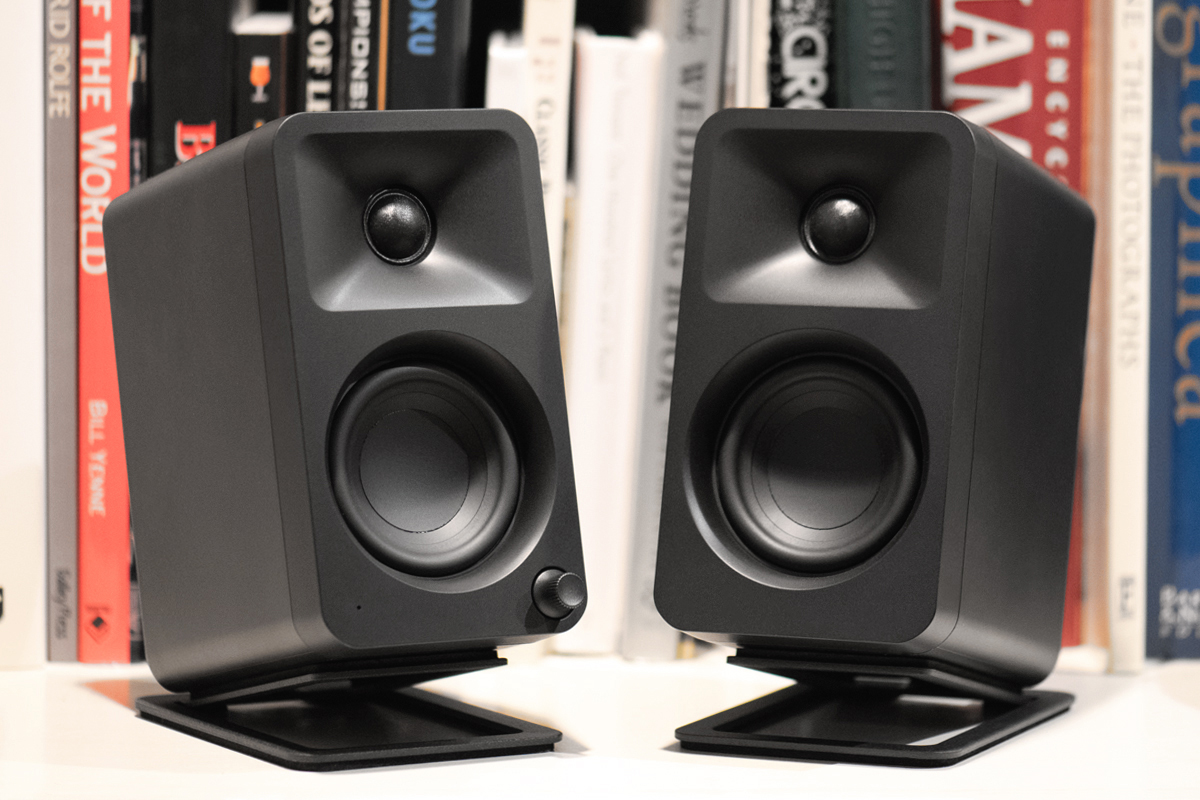
At the front, on the lower right corner of the primary speaker, is a volume knob. Pressing it repeatedly cycles through the three input options. The LED on the lower left illuminates yellow when the USB input is selected, green for RCA, blue for Bluetooth (flashing while pairing, solid when paired).
Kanto’s desktop speaker stands are not some afterthought. They are well designed and proved to be crucial to getting the best performance from the ORAs. The S2 stands tilt the speakers 16 degrees upward so that they are directed at your ears, not your elbows. The SE2 stands tilt the speakers only 6 degrees, but they also raise them (3.8″ at the front). The tilted platforms in both stands have back supports and grippy silicone padding to hold the speakers securely. I used the SE2s for most of my listening.
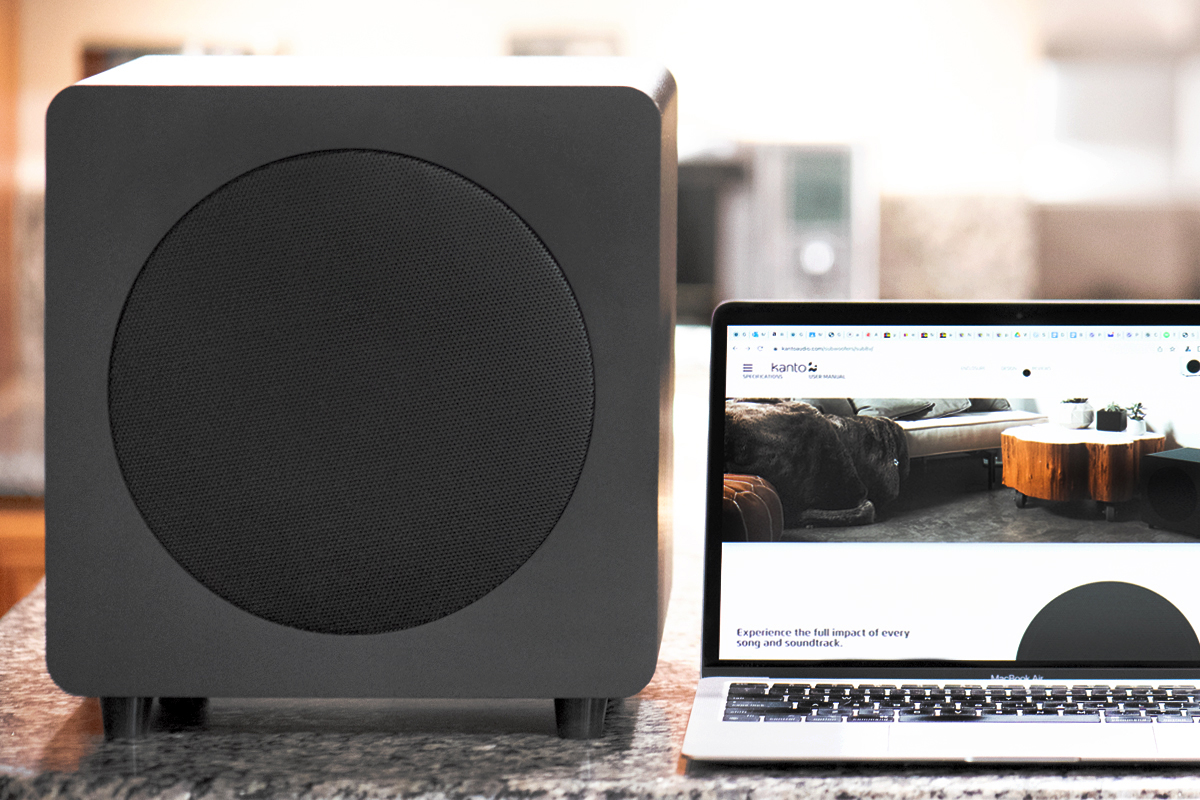
A great companion to the ORA speakers is Kanto’s SUB8 subwoofer, which measures 11.9″H × 11.0″W × 11.0″D and weighs 18.3 pounds. The SUB8 boasts an 8″ paper-cone woofer powered by a class-D amplifier rated at 150W RMS. Specified frequency response is 35Hz–175Hz (again, deviation is unspecified). The SUB8 provided solid, enjoyable bass without overwhelming the sound. Although I could happily live with the ORA speakers by themselves, they did benefit from some reinforcement at the bottom end.
Setup
For a balanced bass output, Kanto recommends positioning the ORA speakers at least 8″ from the front wall. I placed them 13″ away, 23″ apart, with approximately 30 degrees of toe-in. The ORAs can be placed either vertically or horizontally; I kept them in the vertical position.
I positioned the SUB8 abreast with my desk chair, 22″ to the right, 56″ from the rear wall. I left the phase switch at 0 degrees and set the volume just under midlevel.
I listened to the ORAs with and without the SUB8. Apart from testing the ORAs’ Bluetooth functionality with my smartphone—pairing and streaming worked fine—I used my desktop computer (via a USB-A to USB-C cable) as the sole audio source to stream music from Qobuz through Roon.
Listening (sub off)
The first album I played was Emerson, Lake & Palmer’s self-titled debut album (24-bit/96kHz FLAC, BMG / Qobuz). The blistering opener, “The Barbarian,” had surprising weight, given the size of the speakers, and good separation of instruments. On the SE2 stands, with the speakers closer to ear height, imaging and soundstaging were better than when on the shorter S2 stands. Bass, however, seemed slightly diminished. The second track, “Take a Pebble,” is a gentler affair. It opens with Keith Emerson strumming the piano strings like a guitar, with chordal washes setting the scene. Carl Palmer adds a variety of tasteful accents on cymbals, while Greg Lake plays an understated bass line. Instruments had excellent balance and clarity, and Greg Lake’s vocal presence had wonderful immediacy.
Former Genesis guitarist Anthony Phillips often brings the classical guitar or piano to the fore in his solo works. On Private Parts & Pieces I-V (16/44.1 FLAC, Esoteric Recordings / Qobuz), notes and chords in delicate nylon-string numbers, such as “Spring Meeting” and “Nocturne,” were presented vividly, tapering off and decaying with such realism as to impart a real sense of live performance.
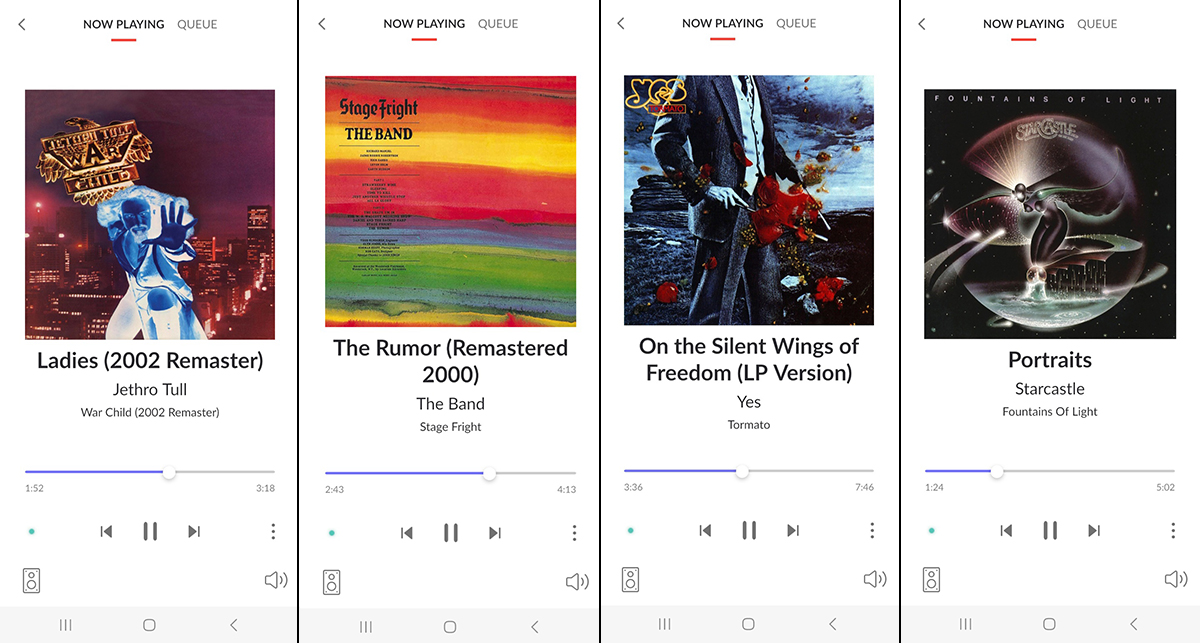
Next up was Jethro Tull’s 1974 release, War Child (16/44.1 FLAC, Parlophone UK / Qobuz). The pastoral “Ladies” features a wonderful mix of acoustic guitars, flute, and assorted percussion. The ORAs kept everything together without getting muddled. As I increased the volume, the soundstage became better defined. Even at maximum volume, the ORAs hung on surprisingly well, maintaining tight control and excellent balance. These little speakers can rock!
I was likewise impressed by how much detail the ORA speakers wrung out of their diminutive drivers. On The Band’s “The Rumor,” from Stage Fright (24/192 FLAC, Capitol Records / Qobuz), there is a wonderful threesome vocal interplay between Rick Danko, Richard Manuel, and Levon Helm. Through the ORAs, the vocals were breathy and weighty, giving a strong sense of “being there.” Robbie Robertson’s pinch harmonics were ringing like bells, and Helm’s ride cymbal was pinging clear and clean in the mix.
On Yes’s 1978 release, Tormato (24/192 FLAC, Rhino Atlantic / Qobuz), in the final track, “On the Silent Wings of Freedom,” hearing the ORAs depict Chris Squire’s bass lines not just as a bass guitar but as a Rickenbacker bass guitar made for a highly involving listening experience.

I next listened to Starcastle’s 1977 release Fountains of Light (16/44.1 FLAC, Epic Records / Qobuz). This band was heavily influenced by Yes and has been accused of lack of originality, but their melodies and vocals are thoroughly enjoyable all the same. Starcastle frontman, former REO Speedwagon vocalist Terry Luttrell, sings with a clear, friendly style that echoes Yes’s Jon Anderson, while keyboardist Herb Schildt illuminates the stage with a shimmering show of tone colors that don’t dazzle, only engage.
On “Portraits,” the ORAs’ imaging was particularly good. Guitars, electric and acoustic, swirl around against Schildt’s luminous keyboard. There’s a lot going on, but the ORAs picked up all the pieces and brought them together as a complete musical picture.
The Dutch rock band Diesel released just one album, the classic 1981 Watts in a Tank (16/44.1 FLAC, Universal Music / Qobuz). For a time, the opening track, “Sausalito Summernight,” enjoyed good airplay (probably thanks to its angular guitar riff and groove; it sounds like a lost Steve Miller song). The entire album, though, is a winner. It is full of variety: from the beachy vibe of “Sausalito” to the crunch of “Alibi” to the sunshine smile of “Good Mornin’ Day.” It sounded great through the ORAs, in both tonality and soundstage. Instruments were presented distinctly, with precision and clarity.
Listening (sub on)
The SUB8 proved to be an excellent complement to the ORAs. Once in its optimal position, it supplied a nice extension to the ORAs’ low range without sounding boomy or thumpy. This was particularly evident in Olivier Latry’s performance of Prélude pour orgue, by French composer Olivier Messiaen (16/44.1 FLAC, Deutsche Grammophon / Qobuz). As in much of Messiaen’s organ music, this nine-minute-long composition is harmonically adventurous, drawing from a rich palette of unsettling dissonances and progressions. As I was listening to this hauntingly beautiful piece , I could sense a barely audible, deep, ambient rumble. I thought there was some vehicle running outside—until I realized that what I was hearing was the visceral rumble of the 32′ pipes of Notre-Dame’s Grand Organ, the largest in France.
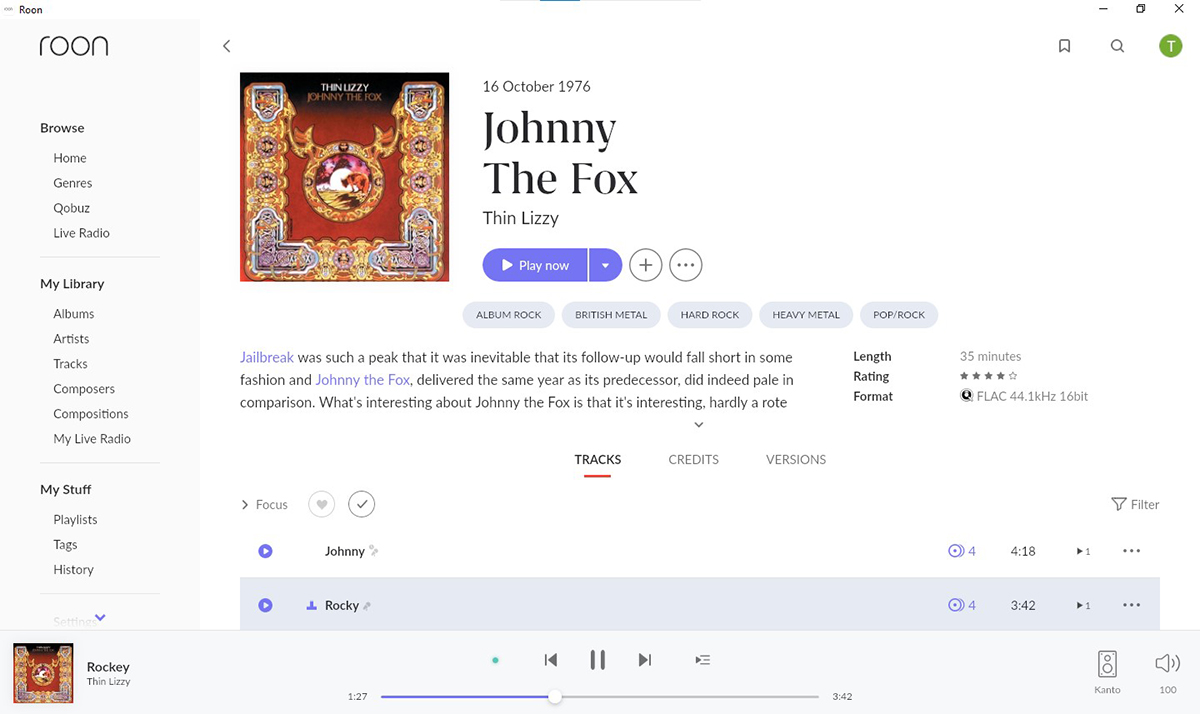
Thin Lizzy’s 1976 release Johnny the Fox (16/44.1 FLAC, Universal Music / Qobuz) is a snapshot of a band at peak form. In this album, Phil Lynott’s streetwise words and driving bass meet the twin-guitar barrage of Brian Robertson and Scott Gorham, while drummer Brian Downey, as always, delivers some of the tastiest licks in rock. On the scorching “Rocky,” where Lynott sings about a young rock star coming alive on stage with his guitar, the SUB8-enhanced ORAs presented each instrument with superb definition while maintaining a coherent whole. I got the full sustain of the guitars without losing the impact of the bass and drums.
Comparison and final thoughts
There’s fierce competition in the desktop and small bookshelf-speaker world. In October 2019, Gordon Brockhouse reviewed Kanto’s current flagship powered loudspeaker system, the TUK ($799.99). Gordon was impressed by the TUK’s design, execution, and soundstaging, but he noticed the system could sound somewhat harsh at higher volumes. In his review of SVS’s Prime Wireless active speaker system (discontinued; $599.99 when available), he compared the SVS and TUK systems. While the Kanto system was “more exciting,” the SVS system was “slightly easier on the ears.” The Prime Wireless Active system has been supplanted by the Prime Wireless Pro speaker system ($899.99), which Gordon found to deliver deeper bass and more authoritative sound than its predecessor.
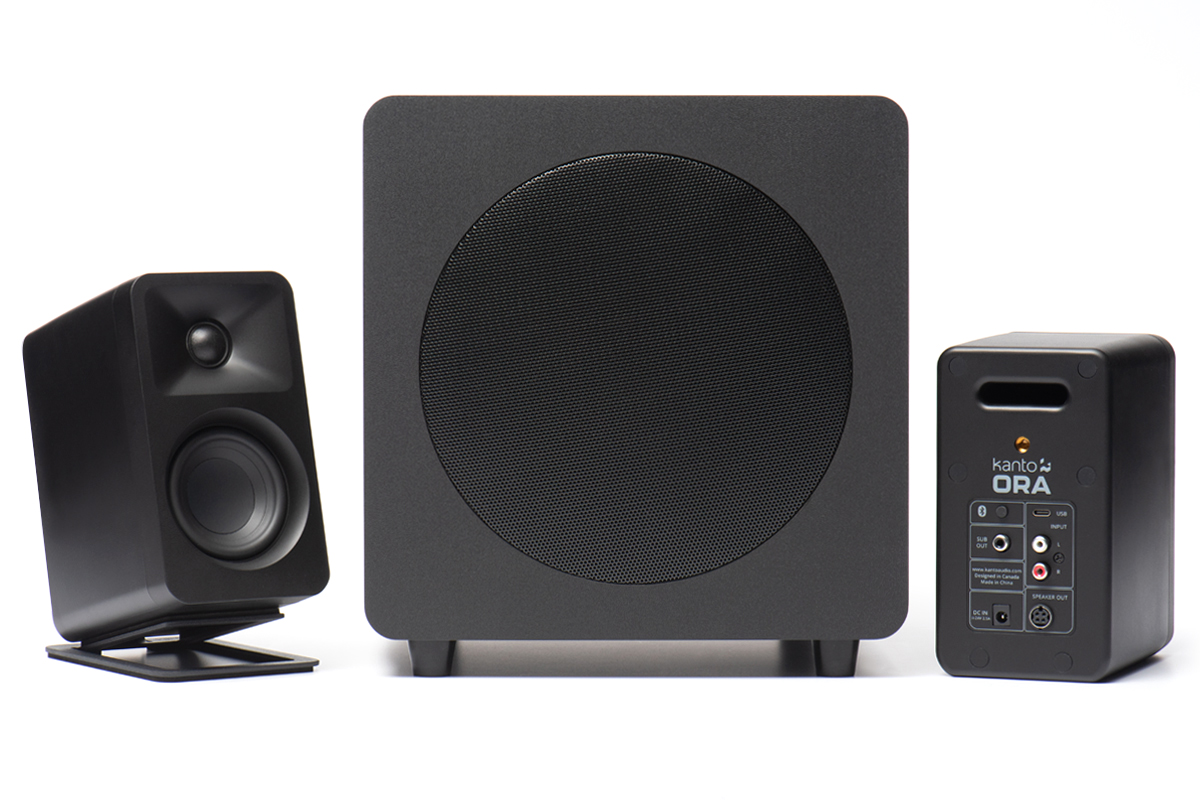
The TUK and Prime Wireless speaker systems are significantly more expensive than the ORA system and are aimed at the audiophile rather than the general lifestyle consumer. That said, I have no hesitation recommending the ORA for desktop audio. It has a winning combination of clarity, drive, and openness that works well with many genres of music and lets you listen to them for hours without ear fatigue. Enjoy the ORA system on its own, or pair it with the SUB8 for truly scrumptious sound.
. . . Todd Whitesel
Associated Equipment
- Sources: Samsung Galaxy A32 5G smartphone and Dell Inspiron 3847 notebook PC.
- Subwoofer: Kanto SUB8.
- Desktop speaker stands: Kanto S2 and SE2.
- Network: Netgear Nighthawk R6400v2-AC1750.
- USB cable: Scosche StrikeLine USB-A to USB-C.
Kanto Audio ORA Reference active speaker system
Price: $349.99.
Warranty: Two years, parts and labor.
Kanto Audio
110-2440 Canoe Avenue
Coquitlam, British Columbia V3K 6C2
Canada
Phone: (888) 848-2643
Email:
Website: www.kantoaudio.com



